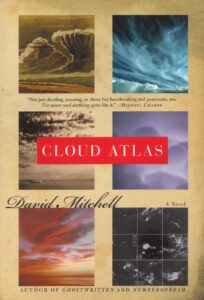Whether you believe our future will be a utopia or a dystopia—a warmed-over planet run by bots or a new age of enlightenment and peace—chances are there will still be crime.
It’s what we humans do.
No matter what inventions we devise—what new technologies make it easier for us to order food from our phone or drive without driving or cheat on that history test—human nature remains a constant. And our nature often leads us to do regrettable, unsavory, and illegal things.
This is one of the many reasons I’m a fan of stories that combine crime/mystery tropes with some speculative element, futuristic setting, or crazy new technology. It’s a way of imagining a fresh new world in which to envelope the reader while also asking tough questions about humanity. These stories have just enough familiarity to give us comfort (who doesn’t love a murder mystery?) while also blowing up our expectations with strange new worlds, bizarre customs, and brain-altering devices.
My new novel, Blind Spots, is a detective story set in a world where all of mankind went blind and needs to rely on devices to see. When someone figures out how to hack it and commit murders without being seen, our down-at-the-heels detective needs to make some tough decisions and confront his own reliance on tech—which, like ours today, is getting out of control.
I wrote Blind Spots partly because it was a fun way to comment on how our tech addictions are altering the way we see the world and each other, and partly because this type of storytelling is a blast. Here are a few of my favorite books that combine these two genres:

The City and the City by China Mieville
Structured as a crime story in which the detective is investigating a murder, this brilliant novel is set in a world in which two cities are superimposed onto each other. You’re either a resident of Beszel or a resident of Qoma, and people from one aren’t supposed to interact with the other, even though they literally occupy the same space, like a double-exposed photo. The killer has somehow broken this rule, stepping from one city into the next to commit a politically tinged crime. It all sounds preposterous, but Mieveille makes it work, spinning it into a racial and cultural allegory that’s as fun as it is strange.

Shovel Ready by Adam Sternbergh
If you like your noir pitch black, spend some time with the anti-hero Spademan, a killer for hire. Shovel Ready is set in a futuristic, crumbling New York in which most people stay home hooked up to a VR-like game and hide from their awful reality. Half the fun here is the story, and the other half is Sternbergh’s kinetic, crackling, hard-boiled-til-the-pot-starts-to-warp prose.

The Shining Girls by Lauren Beukes
Over the last few years, a number of female authors have taken on the serial killer trope and moved the focus away from those vapid psychopaths and onto the victims. Beukes does that and more by combining her story with time travel. Her heroine, Kirby Mazrachi, is hunting a Depression-era killer who stumbled upon a mysterious House that allows him to travel through time, visiting his victims first as little girls, then coming back for them years later. It’s imaginative, scary, and paced like a shot of adrenaline.

Finch by Jeff Vandermeer
Before he blew everyone’s minds with his Area X trilogy, Vandermeer was just as weird. Finch is a detective story in which our human hero lives in a world that’s been taken over by mushroom-like aliens. Finch has to solve a murder while staying one step ahead of our new fungi overlords. The book is surreal and every bit as strange as I’ve made it sound.

The Intuitionist by Colson Whitehead
Whitehead’s first novel may still be my favorite of his. In a twist on the gumshoe novel, his hero is not a detective but an elevator inspector, in a world where elevator inspectors are lionized for upholding the integrity of the very concept of upward mobility. Not only is she the first Black female elevator inspector, she’s one who uses a controversial power to assess the soundness of a building. When someone commits a murder on her watch, she has to take a deeper look into the power structures of her familiar, but much stranger, world.

Cloud Atlas by David Mitchell
Okay, this one doesn’t so much combine crime and SF as add them, along with several other genres, into a kaleidoscopic storytelling structure. Mitchell’s magnum opus is comprised of six stories, all set in a different time period and written in a different style, each one a fast-paced tale that comments on power and subjugation. One story is an Erin Brokovich-like environmental thriller in which a journalist exposes wrongdoing and courts danger as a result; another, set in a futuristic city, features a protagonist who’s been genetically designed to be a servant, and whose attempt to break free of her proscribed role risks bringing the whole society down.

Station Eternity by Mur Lafferty
If you’re looking for something even more out there—as in, outer-space out there—try the first in this interstellar series about Mallory Viridian. Set in the near future, Mallory has the habit of attracting murder; she doesn’t commit them, but people around her are killed, again and again. So she decides to move to a space station populated by aliens, hoping that by being around fewer humans, she’ll find herself around fewer homicides. It doesn’t quite work out.

Do Androids Dream of Electric Sheep? By Philip K. Dick
It’s hard to even imagine this category of books existing in a world in which Philip D. Dick hadn’t been born. In that alternate reality, would any of the other books on this list have been written? This novella, the basis for Blade Runner, introduces us to a world of replicants, posing tough questions about artificial intelligence that, as today’s ChatGPT headlines remind us, is ever-more-relevant.
***





















